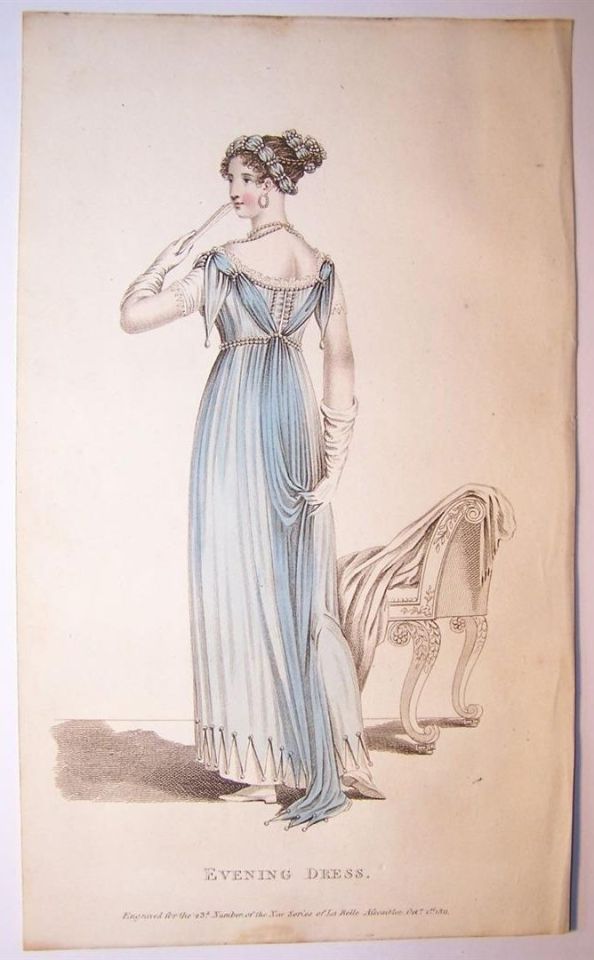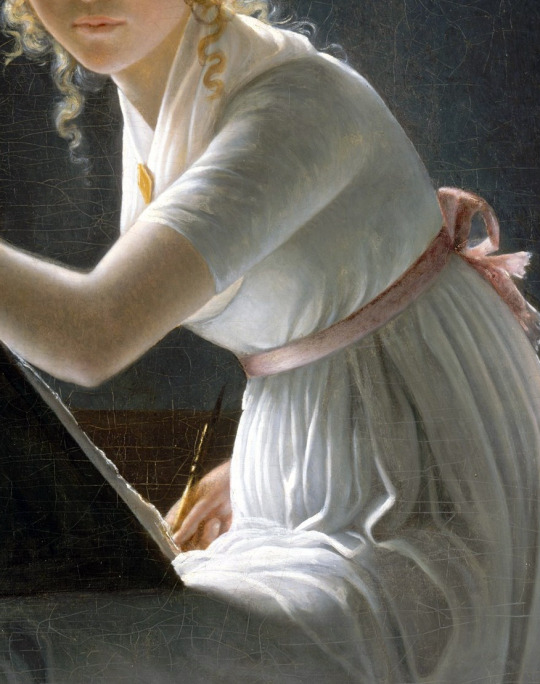Anything and Everything from ugly Regency to pretty Regency will be found here. This will be basically just an area where I will collect my random Regency research along the months, it is not with a definite outcome that I do it, simply for the pleasure of it... after all, who doesn't love the Regency? (I realise some people don't, please don't be offended if it doesn't apply! :D )
Don't wanna be here? Send us removal request.
Photo



Burnous captured from Napoleon’s baggage train after the Battle of Waterloo, 1815
From the Royal Collection
2K notes
·
View notes
Photo

Evening dress from La Belle Assembleé, 1811
318 notes
·
View notes
Photo

1813.
There is nothing I don’t like about this dress - the low V-back, the lace-like edges, the different fabric on the sleeves, the SHEER LOWER SKIRT PANEL! Omg. Such a fan. (and those SHOES!)
157 notes
·
View notes
Photo

From the Napoleon and the Empire of Fashion Exhibition
131 notes
·
View notes
Photo


Hello there! I’d like to thank all of my followers for following me! I’m doing this small giveaway to show my followers that I really appreciate you guys. I’m so glad I connect with all of you and I just love you all. So, I am giving away the new Shadow of the Queen comic-book and the little Apple Stamp.
Here are the rules:
You MUST be following me!
Re-blog as many times as you like!
Likes do NOT count.
Must have your ask box open! - the winner must respond back within’ 48 hours or I’ll be picking a new winner.
Open for Everyone!
PRIZE: One Winner Only, chosen by random.org
This contest ends on October 31st, 2013.
89 notes
·
View notes
Photo

Jean Auguste Dominique Ingres- Portrait of Madame Guillaume Guillon Lethiere, born Marie Joseph Honoree Vanzenne, and Her Son Lucien Lethiere
source: sightswithin
0 notes
Photo

A court dress of black velvet, c. 1810-1820. (via christies.com)
78 notes
·
View notes
Photo






1820’s Fashion. Pink/Red Dresses. Part 3/3 (via)
1K notes
·
View notes
Photo

Round Gown, most likely British, ca. 1798
From the Metropolitan Museum of Art
16 notes
·
View notes
Photo










1820’s Fashion. Blue Dresses. Part 1/3 (via)
556 notes
·
View notes
Photo

Ingres - Henriette Harvey and Her Half Sister, Elizabeth Norton 1804
70 notes
·
View notes
Photo



Costume Parisien, 1813. (Source.)
69 notes
·
View notes
Photo

French regency dress of red net with high waist, puff sleeves, and Kashmir-inspired motif at the hem, in the posession of the Musée Historique de Tissu de Lyon
via x
419 notes
·
View notes
Photo

1805-1810 [ca]
Blue silk regency gown with embroidery and spencer Jacket
329 notes
·
View notes
Photo

Marie-Denise Villers,Portrait of Young Woman Drawing,detail,1801.
5K notes
·
View notes
Photo


Date: 1812-1816
Empire style; red crepe silk woven with small sprigs; additional woven decorative floral border at hem.
Judith Throckmorton Ball Singleton wore this dress in Winchester, Virginia. She was born March 14, 1775. Her father, William Ball, owned a plantation the family called “Chapel Green” on the Shenandoah River in what is now Clarke County. She was related to many prominent Virginia families. Judith’s grandfather, George Ball, was George Washington’s second cousin. Her mother died when she was an adolescent, and her father remarried. In 1797 Judith married James Singleton, an ambitious local man. She and her husband were appointed as guardians of her two younger siblings when her father died. She and James had eight children, three of whom died as children. Their son, James Washington Singleton, became a successful Illinois lawyer, businessman, and prize stock farmer. His military and political service included two terms in the U.S. House of Representatives. Over the years they increased the amount of land they owned. Besides their house in Winchester, they built a house on their farm “Paxton,” just outside Winchester. They also had another farm called “River Farm,” previously owned by Judith’s father. The years 1810 to 1815 were the most prosperous years of their lives. The 1810 Census shows that they owned 35 slaves, both field hands and household servants. James Singleton also served in the Virginia House of Delegates for several terms and was an officer in the Virginia militia, rising to the rank of general. He died suddenly in 1815 when an epidemic swept the area. She wore this dress during this prosperous period. She lived until 1852, living most of the time with her daughter and son-in-law. The dress itself is deceptively simple in its construction. A careful examination shows that it was probably made by a skilled dressmaker. The bodice was cut on the bias so it would stretch over the bust; the creation and insertion of the “poufs” required considerable sewing skills.
#1812-1816#1812#1813#1814#1815#1816#dress#regency#Winchester#Virginia#America#Judith Throckmorton#Judith Throckmorton Ball Singleton
2 notes
·
View notes
Photo

Date: 1815-1825
This dress belonged to Judith Hays Myers of Richmond, Virginia. Born September 2, 1767, in Boston, Massachusetts, she was the daughter of Moses Michael Hayes, a prominant businessman in Boston and his wife Rachel. On September 21, 1796, she became the second wife of Samuel Myers of Virginia-the same day that her sister, Sally, married Samuel’s brother, Moses. Part of a small, and active, Jewish community in Richmond, Samuel was known for his civic involvement. Judith and Samuel had six children and also cared for two of Samuel’s nieces. Many years later her granddaughter described her as “small, dark, pretty and pleasing, and idolized by her children.” Judith died February 2, 1844, and is buried in Richmond. Her dress is very plain, but is made of a very heavy silk satin, befitting her status as the wife of a middle-aged merchant.
#1815-1825#1815#1816#1817#1818#1819#1820#1821#1822#1823#1824#1825#udith Hays Myers#Richmond#Virginia#America
5 notes
·
View notes